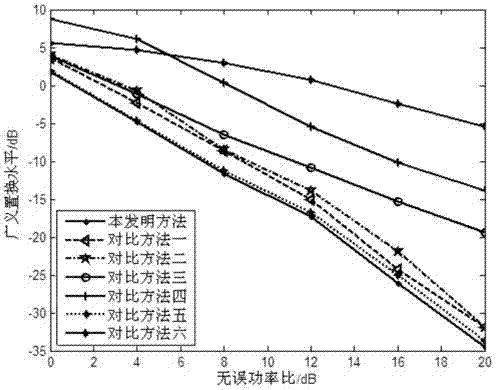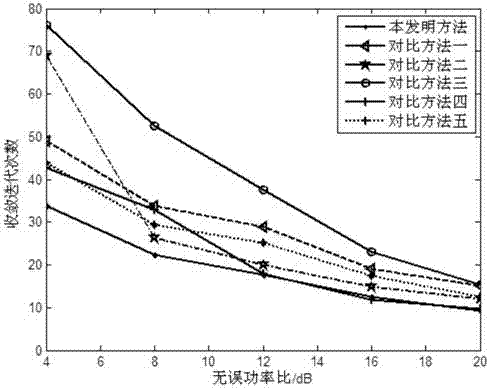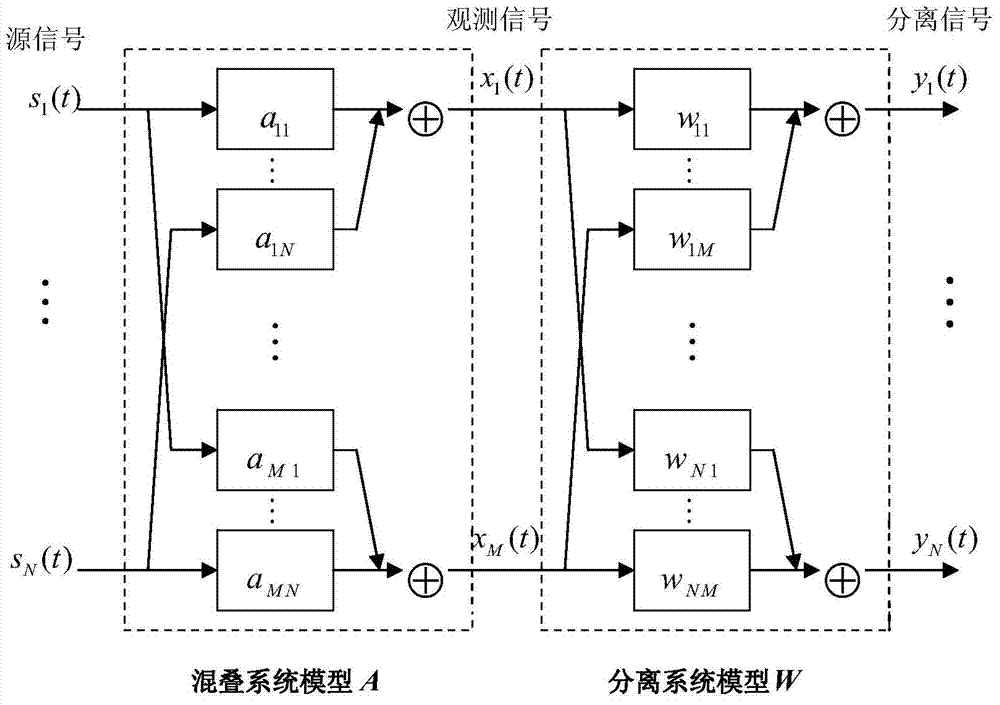Non-orthogonal joint diagonalization instantaneous blind source separation method based on double iteration
A technology of joint diagonalization and blind source separation, applied in the field of blind source signal separation, non-orthogonal joint diagonalization instantaneous blind source separation based on double iteration, can solve low computational complexity, singular solution, computational complexity major issues
- Summary
- Abstract
- Description
- Claims
- Application Information
AI Technical Summary
Problems solved by technology
Method used
Image
Examples
Embodiment 1
[0061] The present invention has carried out innovation and research on the problems of unavoidable trivial solutions and degenerate solutions and high computational complexity existing in blind source separation in the prior art. The present invention is a non-orthogonal joint pair based on double iteration Keratinized Transient Blind Source Separation Method, see figure 2 , the instantaneous blind source signal separation process of the present invention comprises:
[0062] Step 1. First, record multiple observation signal data for the observation target, and divide them into L different time points t 1 ,...,t L or L different time delays τ 1 ,…,τ L The corresponding observation signal data is recorded.
[0063] A linear aliasing and separation signal model for blind source separation see figure 1 , assuming there are N mutually statistically independent source signals s j (t),j=1,2,...,N, through the linear instantaneous aliasing system A, the array composed of M se...
Embodiment 2
[0104] The non-orthogonal joint diagonalized instantaneous blind source separation method based on double iteration is the same as that in embodiment 1, assuming that a blind source separation system applied to noise separation inputs 3 mutually uncorrelated noise source signals as source signals, and outputs 5 Observation signal, in the case of additive noise, the aliasing model of the aliasing system of the real observation signal after linearization A = - 2.4620 - 0.1924 0.5431 0.1449 0.4775 1.6644 - 1.1025 - 0.1795 2.211...
Embodiment 3
[0106] Non-orthogonal joint diagonalization instantaneous blind source separation method based on double iteration is the same as embodiment 1-2, see Figure 4 , when the double iterative algorithm in the present invention iterates one step, the value of the left aliasing matrix U is first given as U(i), so that the right aliasing matrix V(i)=U(i), by calculating and r ~ VV ( l , i ) = 2 [ v 1 H ( i ) R ( l ) v 1 ( i ) , . ...
PUM
 Login to View More
Login to View More Abstract
Description
Claims
Application Information
 Login to View More
Login to View More - R&D
- Intellectual Property
- Life Sciences
- Materials
- Tech Scout
- Unparalleled Data Quality
- Higher Quality Content
- 60% Fewer Hallucinations
Browse by: Latest US Patents, China's latest patents, Technical Efficacy Thesaurus, Application Domain, Technology Topic, Popular Technical Reports.
© 2025 PatSnap. All rights reserved.Legal|Privacy policy|Modern Slavery Act Transparency Statement|Sitemap|About US| Contact US: help@patsnap.com



